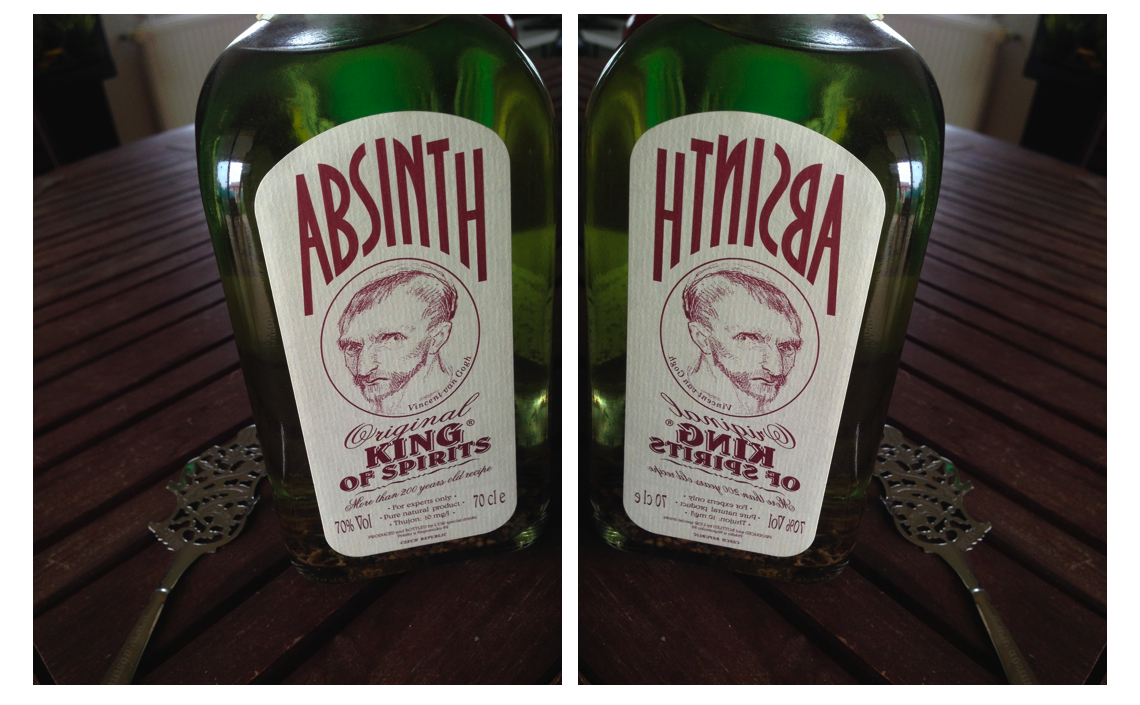
#72
ABSINTHE MAKES THE HEART GROW FONDER
19 Aug 2014 By Xin Hui Helder-Eng
Absinthe – the mysterious, mind-altering drink with a debatable psychoactive effect but a definite cultural impact – what sorcery is it and why does it occupy an unnaturally glowing green space in contemporary literature?
“Absinthe is the aphrodisiac of the soul. The green fairy who lives in the absinthe wants your soul, but you are safe with me.” – line from Bram Stoker’s Dracula (1992)
—
In the early 1900s, absinthe – also known as the Green Fairy – was banned in many countries, including France, Switzerland, and the United States. It had become associated with illicit behavior, accused of its hypnotic, hallucinogenic, mind-altering ways.
In the late 1900s, absinthe – besides its pop culture reference in Moulin Rouge, where the Green Fairy is played by Kylie Minogue and voiced by Ozzy Osbourne – is romantically described by alcohol-lovers, and psychedelically prescribed to the artists, often in tandem with the following names:
1. Oscar Wilde – who wrote much about absinthe’s connection with the creative process, “”What difference is there between a glass of absinthe and a sunset?“
2. Henri Tolouse Lautrec – a friend of Vincent Van Gogh, an artist and aristocrat, known as the Tripod by the “ladies of ill repute” – who left a legacy of art that… captures the very essence of abinthe’s finest hour amongst the whores and high life of a lost Paris. Read More
3. Vincent Van Gogh – an artist, and a troubled, lonely, and tortured soul – a failed preacher, who, according to popular 21st bar stool philosophers, cut off his ear whilst under the influence of absinthe. For real? Get to the bottom of it Here.
All this to say that by the 2000s, all it has done is make us absinthelutely have to try it.
Does it really cause hallucinations?
By: How Stuff Works
Absinthe does have a very high alcohol content — anywhere between 55 and 75 percent, which equates to about 110 to 144 proof. It makes whiskey’s standard 40 percent (80 proof) seem like child’s play, which is why absinthe is supposed to be diluted. Absinthe is not a hallucinogen; its alcohol content and herbal flavor sets it apart from other liquors…
The chemical that’s taken all the blame for absinthe’s hallucinogenic reputation is called thujone, which is a component of wormwood. In very high doses, thujone can be toxic. It is a GABA (Gamma-aminobutyric acid) inhibitor, meaning it blocks GABA receptors in the brain, which can cause convulsions if you ingest enough of it. It occurs naturally in many foods, but never in doses high enough to hurt you. And there’s not enough thujone in absinthe to hurt you, either. By the end of the distillation process, there is very little thujone left in the product. Modern science has estimated that a person drinking absinthe would die from alcohol poisoning long before he or she were affected by the thujone. And there is no evidence at all that thujone can cause hallucinations, even in high doses.
Art critics of the post absinthe period have tended to know the drink only by reputation built by the hysterical and unscientific propaganda of the abolitionist. Absinthe was a fascinating, and convenient, explanation of both the genius and insanity of one of the world’s greatest artists. A later episode in which van Gogh tried to eat paint has even been latterly interpreted as an absinthe induced mania. All very well, but a madman who drinks absinthe is quite different from an absinthe drinker who becomes mad and van Gogh was the latter. He was a morose and troubled drinker of that time and might have well have chosen Campari and soda if he’d had a later incarnation, although perhaps the famous yellow hue of his painting may have been replaced by a garish red? Who can tell, but to blame absinthe for his lunacy is unfair and on balance wrong. In short, the Green Fairy may be the source of inspiration but not in our opinion of self-mutilation.

You might be interested in...
DRINK THIS (QUICK): HENDRICK'S ABSINTHE
Is The Green Fairy About To Go Mainstream?
5 BOTTLES YOUR HOME BAR CAN'T DO WITHOUT
These ingredients aren’t usually seen at home – but their presence opens up a realm of cocktail possibilities. Here are five bottles your liquor cabinet can't do without
IS THE SAZERAC A NEW ORLEANS COCKTAIL?
David Wondrich untangles the complicated history of this classic Crescent City drink.
DRINK THIS (QUICK): HENDRICK'S ABSINTHE
5 BOTTLES YOUR HOME BAR CAN'T DO WITHOUT
IS THE SAZERAC A NEW ORLEANS COCKTAIL?